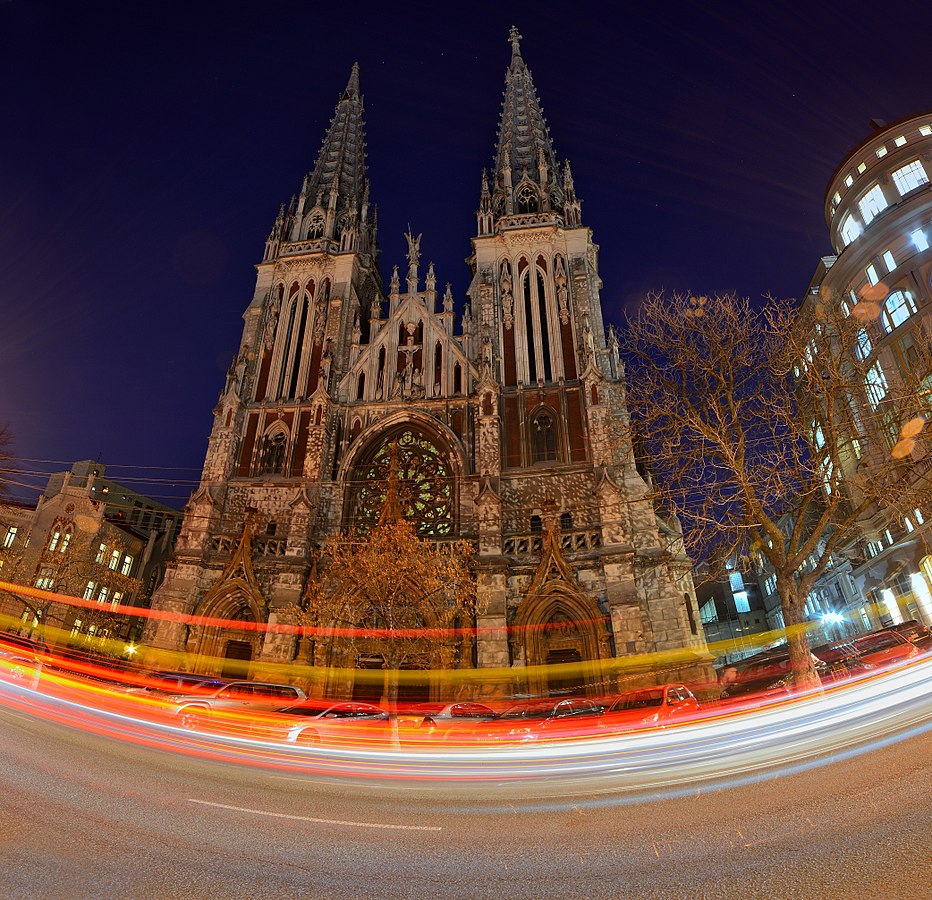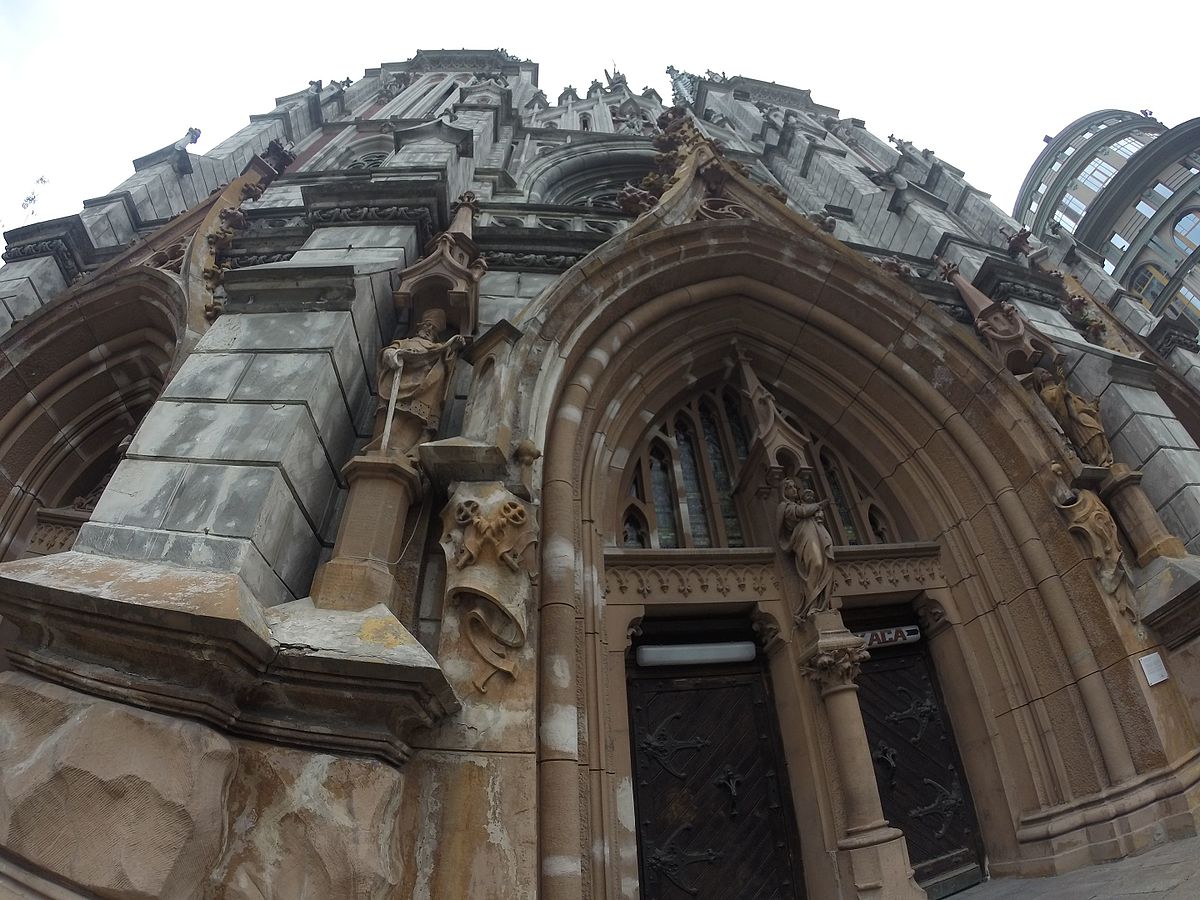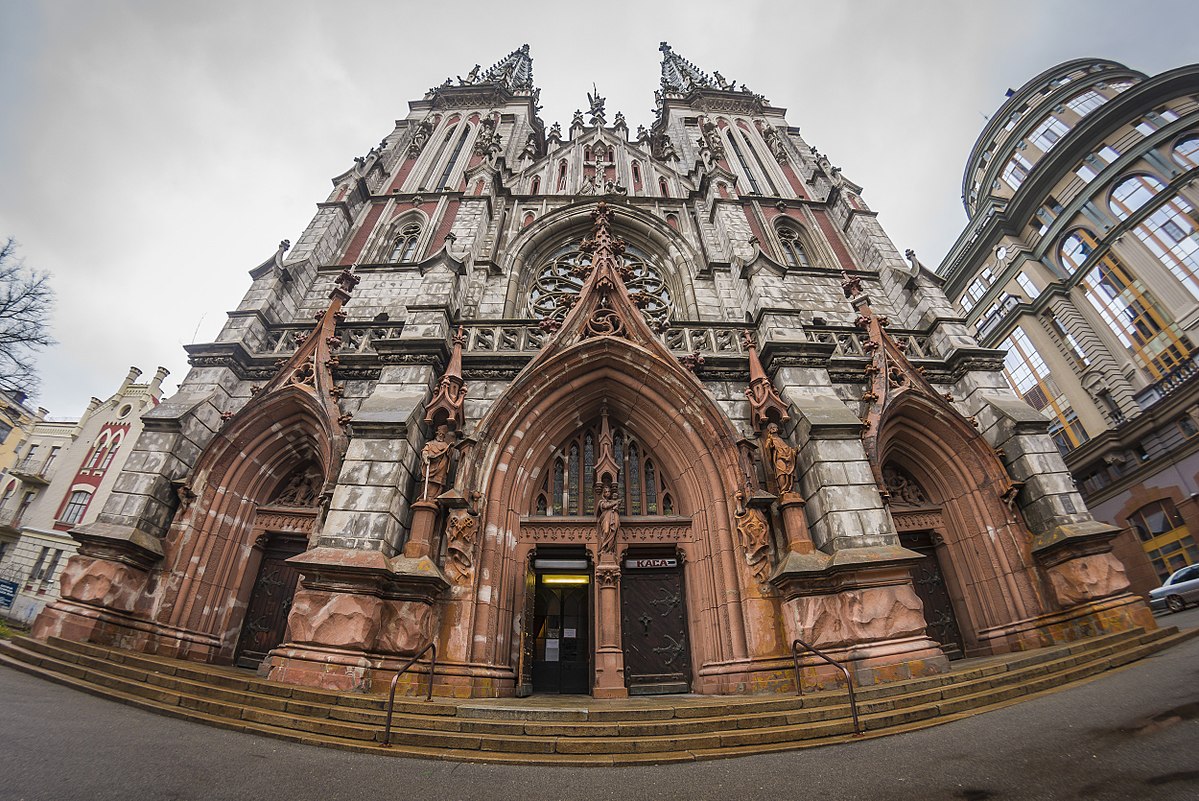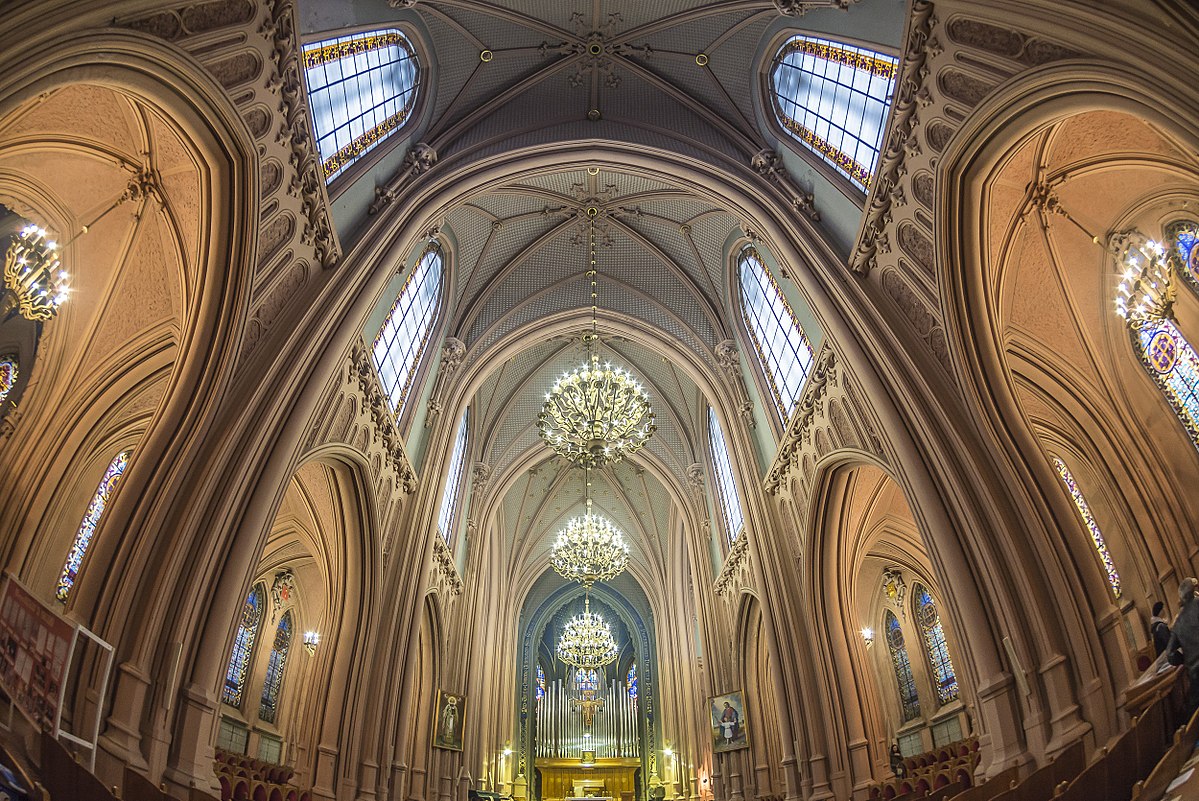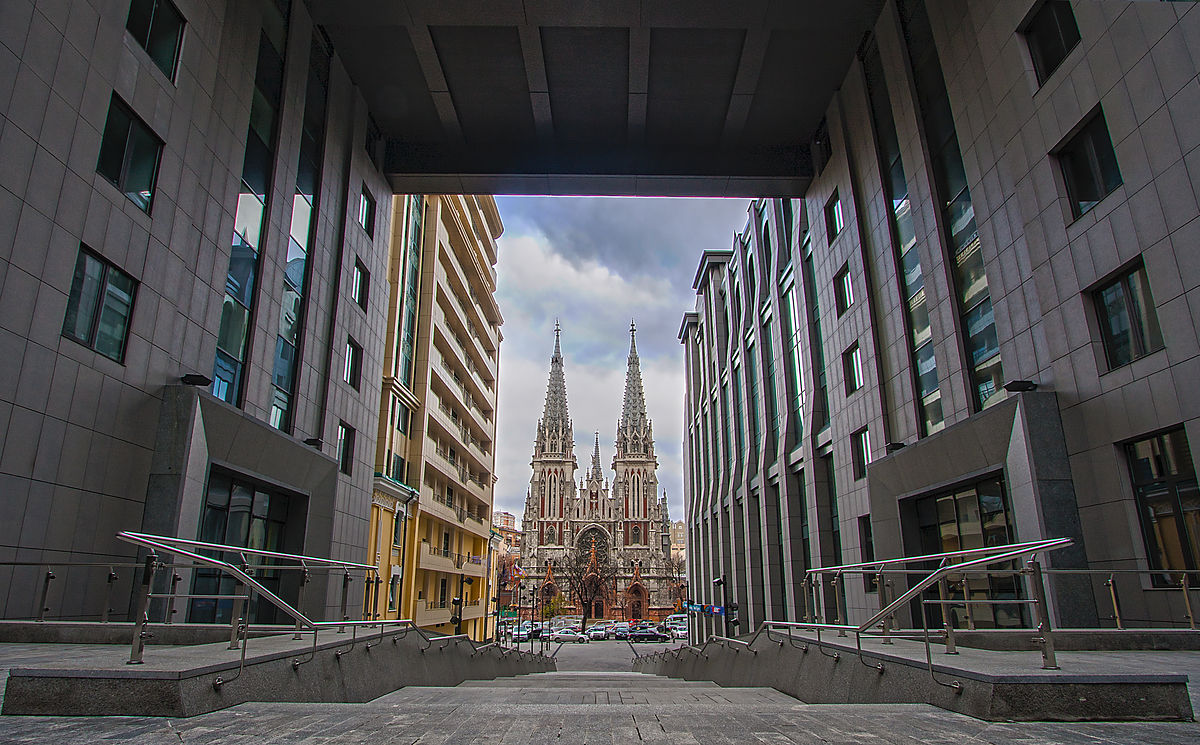Nicholas Church is a Roman Catholic church of St. Nicholas in Kyiv, used since 1980 as the House of Organ and Chamber Music. Construction of the Church of St. Nicholas began according to a competition design by architect S. Valovsky in 1899. The design of the building was carried out under the leadership of the famous Kiev architect Vladimir Gorodetsky (his other most famous projects in Kiev are house with chimeras, Karaite kenassa, Art Museum of Ukraine). The church, built in stylized Gothic forms with high pointed towers and spiers, is distinguished by its slender proportions, lightness, and clarity of compositional structure. Difficult construction conditions and architectural solutions prompted architects to apply innovative engineering technologies at that time. Engineer A. Straus, for the first time in the then construction practice, proposed laying a foundation on concrete piles, and reinforced concrete, a new building material at that time, was widely used in structures. The church was richly decorated with both wall paintings and stained glass windows, of which there were about forty (unfortunately, they have not survived).
In 1909, the church was completed and consecrated. Closed and looted around 1933, and the clergy were subjected to repression. The building housed warehouses. In 1943, during the war, the temple was badly damaged by artillery shelling and fire. In the post-war years, the church building was partially restored and rebuilt for the needs of the Kyiv State Archives.
In 1978, a decision was made by the Council of Ministers of the Ukrainian SSR to create a republican house of organ and chamber music in Kyiv and convert the premises of the former St. Nicholas Church into a concert hall. Simultaneously with the restoration, a partial reconstruction of the building was carried out. Since 1980, the St. Nicholas Church began to function as a concert hall of the House of Organ and Chamber Music.
The organ of the Kyiv House of Organ Music was specially created by masters of the Rieger-Kloss company in the city of Krnov in Czechoslovakia. When designing, maximum consideration was given to the organic combination of the instrument’s shapes with the interiors of the former St. Nicholas Church. The organ has 55 registers, distributed over three manual keyboards and a pedal, 3846 pipes of various diameters and lengths (from 13 millimeters to 6 meters), made of metal and expensive wood (black and red were used). The organ has a wide timbre palette and works of various styles and trends, from ancient music to modern authors, are successfully performed on it. The organ, created not for a functioning church, but for a concert hall, is located unconventionally: not in the choir, but in the altar part of the cathedral, turned into a stage.
The Roman Catholic community of the temple, which formed at the beginning of the last century, suffered greatly during the events of 1917, the repressions of the 1930-50s, and practically disappeared by the middle of the 20th century. The revival of the community’s church life began in the late 1980s. Since 1992, divine services began to be held regularly in the church, alternating by agreement with concert activities of the house of organ music. However, the building itself, included in the list of structures that are not subject to return to religious associations, belongs to the state. In June 2001, Pope John Paul II visited the church.
Where is St. Nicholas Church (House of Organ and Chamber Music) located?
Bolshaya Vasilkovskaya street, 75
